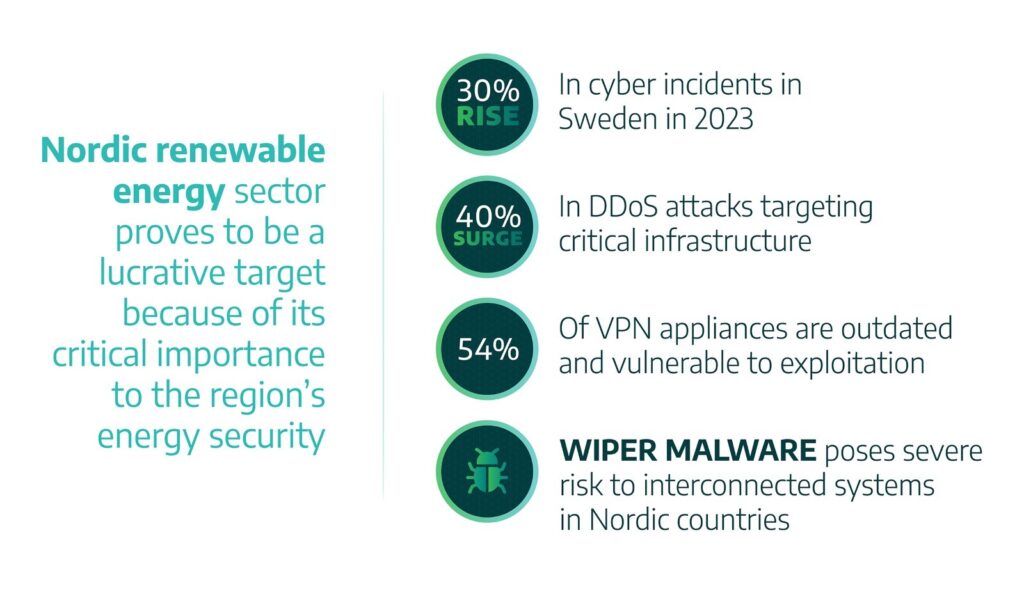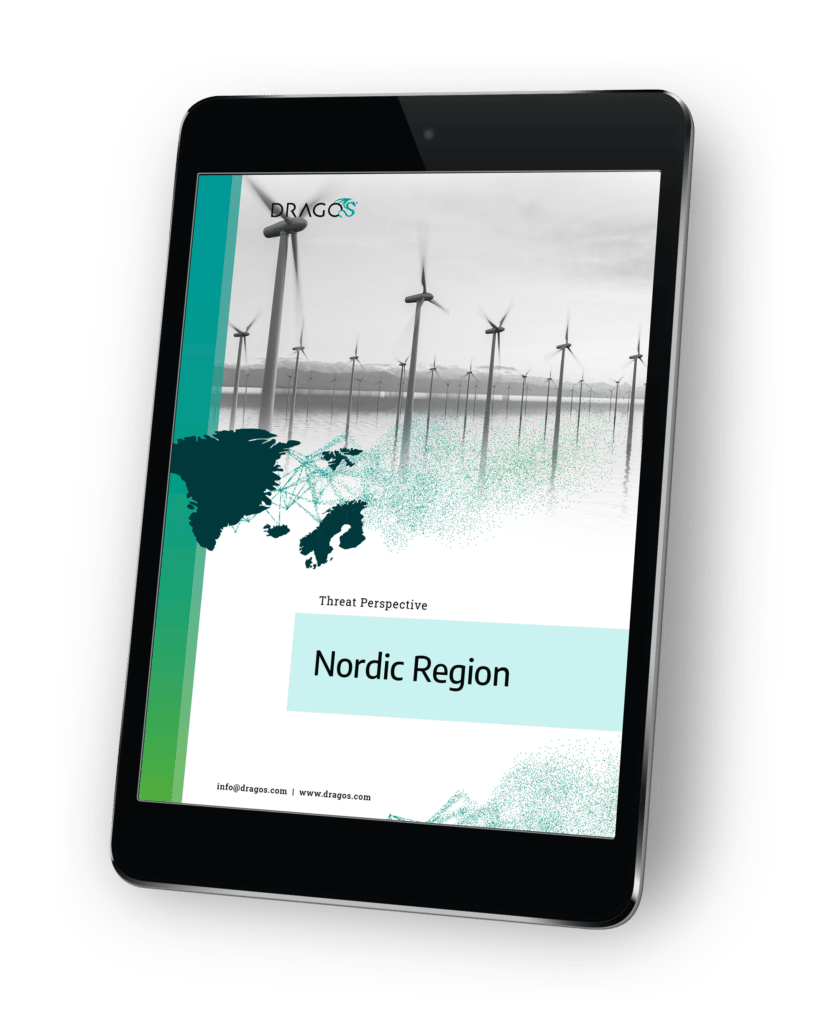Information provided here is sourced from Dragos OT Cyber Threat Intelligence adversary hunters and analysts who conduct research on adversary operations and their tactics, techniques, and procedures (TTPs). Dragos OT cyber threat intelligence is fully reported in Dragos WorldView threat intelligence reports and is also compiled into the Dragos Platform for threat detection and vulnerability management.
The Nordic region is renowned for its advanced digital infrastructure and high levels of connectivity. As these countries spearhead technological and renewable energy advancements, their exposure to cyber risks also escalates. The blog is based on research from the Nordic Countries Threat Perspective report first published in Dragos WorldView. Armed with data and a deep analysis of regional vulnerabilities, we will cover the cybersecurity challenges facing industrial control systems (ICS) and operational technology (OT) in the Nordic region.
Download the complete analysis of OT cyber threats targeting Nordic renewable energy.
Get the Full ReportNordic Cyber Threat Landscape Insights
The Nordic countries – encompassing Denmark, Finland, Iceland, Norway, and Sweden, the autonomous territories of the Faroe Islands and Greenland, and the autonomous region of Åland – have experienced a significant uptick in cyber threats. The interconnectivity essential to their economies and societies also presents a substantial vulnerability for industrial infrastructure. Here are some notable trends and insights from the report:

- Renewable Energy Sector Targeting: The renewable energy sector across the Nordic region is a primary target for cyber operations, with adversaries focusing on wind, solar, nuclear, hydroelectric, and biofuels infrastructure. The critical importance of these assets for the region’s energy security makes them lucrative targets for cyber adversaries seeking to disrupt operations and cause economic harm.
- Sweden as a Connected Hub: In 2023, Sweden witnessed a 30 percent increase in cyber incidents compared to the previous year, with similar trends observed across the region. It also hosts about 57 percent of the region’s internet-connected industrial control systems.
- DDoS as a Persistent Threat: Over the past year, DDoS attacks have surged by 40 percent, targeting critical infrastructures such as transportation and public services, significantly disrupting daily operations.
- Vulnerability of VPN Appliances: Analysis shows that 54 percent of VPN appliances in the Nordic renewable energy sector are outdated Cisco SSL VPNs, vulnerable to exploitation. This figure starkly highlights the region’s exposure to cyber-attacks.
- Wiper Malware Concerns: Wiper malware, which has previously wreaked havoc in neighboring Ukraine, poses a severe risk to the Nordic region’s digital ecosystem. Notably, these malware types have affected critical infrastructures indirectly through interconnected systems.
Dissecting the Nordic Cybersecurity Framework
The cybersecurity strategies of the Nordic countries encompass national and cross-border collaborative measures designed to bolster the resilience of critical infrastructure and improve incident response capabilities. Despite robust strategies, OT cybersecurity gaps remain, particularly in new sectors like renewable energy.
As the cybersecurity landscape evolves, the Nordic region faces several urgent challenges:
- Robust Protection for Renewable Energy: With a rapid shift towards sustainable energy sources, the cybersecurity of renewable energy infrastructure is becoming increasingly critical.
- Enhanced Regional and International Cooperation: Strengthening collaborative defense mechanisms within the Nordic countries and with European allies is crucial. Enhanced intelligence sharing and joint cybersecurity practices can significantly mitigate prevalent threats.
- Securing Emerging Technologies: The advent of 5G and the Internet of Things (IoT) presents new frontiers for cyber threats. Prioritizing the security of these technologies is essential, as they are poised to become integral components of the Nordic critical infrastructure.
Guiding Principles: SANS ICS 5 Critical Controls
In addressing the unique cyber threats facing the Nordic region’s operational technology (OT) landscape, the SANS 5 Critical Controls for World-Class OT Cybersecurity is the guiding light. These controls are foundational in fortifying the Nordic region against OT cyber threats.
- First, a robust ICS-Specific Incident Response plan is vital for swift action against threats like DDoS attacks and wiper malware, ensuring minimal disruption to critical services.
- Second, implementing Defensible Architecture is crucial for safeguarding interconnected networks across essential sectors like energy and telecommunications.
- Third, ICS Network Visibility and Monitoring must be enhanced to detect and pre-emptively address vulnerabilities, especially in a region heavily reliant on digital technologies.
- Fourth, Secure Remote Access protocols are imperative to prevent unauthorized access through vulnerabilities prevalent in systems like outdated VPNs.
- Fifth, a Risk-Based Vulnerability Management strategy tailored to the Nordic environment helps prioritize threats that could impact vital infrastructure, ensuring resources are allocated efficiently to where they are needed most.
Leveraging OT-Native Technologies & Solutions
In response to these growing and targeted OT cyber threats, the Dragos Platform offers a holistic solution designed to enhance the resiliency of ICS environments. With detailed OT-native network visibility and intelligence-driven detections, the Dragos Platform ensures that organizations are not only aware of their security posture but are also prepared to respond effectively to active and emerging adversary behaviors.
Download the OT Cyber Threat Perspective
Get the complete analysis of OT cyber threats targeting the Nordic region renewable energy sector.

Ready to put your insights into action?
Take the next steps and contact our team today.
